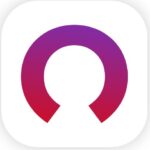In the world of personal finance, there are two main types of income: passive and active. Understanding the differences between the two, as well as their pros and cons, can help you make informed decisions about how to make money and create a diversified income stream that meets your financial goals and lifestyle.
Passive Income vs Active Income
When it comes to making money, there are two main types of income: passive and active.
Passive income is earned consistently with little to no effort on your part (besides the significant upfront work/capital that goes into it), while active income requires ongoing work.
I will explore the differences between the two types of income, as well as their pros and cons. We will also discuss the importance of diversifying your income streams.
Passive Income

Passive income is rarely actually passive. It typically requires either significant upfront work, or significant upfront capital, and the money is earned with little to no effort on your part once started.
Examples of Passive Income
- Rental properties,
- Dividend stocks,
- Print On-Demand
- Digital Products
Rental Properties can definitely be on the “passive” side, but like I said earlier, it will require significant capital as well as work to get your properties purchased, as well as getting it up and running.
Dividend Stocks are probably the purest form of passive income. All it takes is your initial investment into these stocks, and you will be paid out either monthly, or quarterly just for holding these stocks.
Print On Demand is another way to make passive income. I have explained the best strategies for Print On- Demand in my other articles as well as the best places to run your PoD business. A quick breakdown on how this is passive income goes like this; you spend time creating designs and listing products, and you (hopefully) make sales on those items for years to come with all printing, and shipping done for you.
Digital Products will work similarly to print on demand. You create digital products, such as e-books, tutorials, software, and music and audio. You can list these products at places like Amazon, gumroad, and udemy.
Keep in mind that true passive income will take high levels of work or money, to get high levels of income.
Pros and Cons of Passive Income

Pros:
- Less time-consuming
- Steady Stream of Income
- Hands off (once started)
Cons:
- Large amount of upfront work
- Lots of capital required
- Not truly passive (customer support, property management)
Active income

Active income is typically how most of us make money. It is earned through ongoing work, such as traditional employment, freelancing, starting a business, and selling goods or services. Gig work is a great way to earn active income if you have the time.
My favorite way to make an active income, (besides my normal job) is through furniture flipping. I have always found it to be guaranteed income when done right, it just takes a lot of work.
Examples of Active income
- Traditional employment
- Freelancing
- Starting a business
- Selling goods or services
Traditional employment is the most common way of earning active income. It provides a steady paycheck, but it also comes with the trade-off of having less control and flexibility over your schedule and workload.
Freelancing allows for more control and flexibility, but it also requires actively seeking out and winning clients.
Starting a business allows for the potential of high earnings, but it also comes with a high level of risk and effort.
Selling goods or services, whether online or in person, can be a great way to earn active income. This can include anything from physical products to digital products or services like consulting or coaching
Pros and Cons of Active Income
Pros:
- More control and flexibility
- “Guarenteed income”
Cons:
- Time consuming
- Limited earnings potential (only so many hours in the day)
Importance of diversifying income streams

Diversifying your income streams can help reduce risk and provide a more stable financial situation.
It’s important to have a combination of both passive and active income, as each type has its own advantages and disadvantages.
Diversifying with passive income that is earned with little to no effort on your part is a great way to make money without having to constantly trade your time for money.
Active income will always be that guaranteed money as long as you have the time to do the work.
Choosing the Right Income Stream for You
When it comes to choosing the right income stream for you, it’s important to consider your skills, interests, and goals.
It’s also important to understand the pros and cons of each type of income and to create a plan for building and managing multiple income streams.
To build and manage multiple income streams, it’s important to have a plan and set goals. It’s also important to diversify your income streams and to continuously research and explore new opportunities.
Importance of setting goals and creating a plan
Setting goals and creating a plan can help you stay focused and motivated while working towards financial success. It’s important to have a clear idea of what you want to achieve and to create a plan for how to get there.
In conclusion, understanding the differences between passive and active income can help you make informed decisions about how to make money and create a diversified income stream that meets your financial goals and lifestyle.
Diversifying your income streams can help reduce risk and provide a more stable financial situation. It’s important to have a combination of both passive and active income, as each type has its own advantages and disadvantages.
Remember to research and understand the regulations and safety considerations, invest in high-quality equipment, and market your services effectively. With the right approach, the sky’s the limit for your income
Passive vs Active Income Frequently Asked Questions
Q: What is the difference between passive and active income?
A: Passive income is earned with little to no effort on your part, while active income requires ongoing work. Examples of passive income include rental properties, dividend stocks, and online courses, while examples of active income include traditional employment, freelancing, and starting a business.
Q: Is it possible to have both passive and active income?
A: Yes, it is possible to have both passive and active income. In fact, it’s recommended to have a combination of both as each type has its own advantages and disadvantages. Diversifying your income streams can help reduce risk and provide a more stable financial situation.
Q: What are some passive income ideas I can start with?
A: Some passive income ideas include renting out a property, investing in dividend-paying stocks, peer-to-peer lending, and creating and selling online courses or e-books.
Q: What are some active income ideas I can start with?
A: Some active income ideas include traditional employment, freelancing, starting a business, and selling goods or services.
Q: How do I choose the right income stream for me?
A: When choosing the right income stream for you, consider your skills, interests, and goals. Understand the pros and cons of each type of income and consider the level of investment and effort required.
Q: How can I make sure my income streams are diversified?
A: To ensure your income streams are diversified, have a plan and set goals. Diversify your income streams and continuously research and explore new opportunities.








